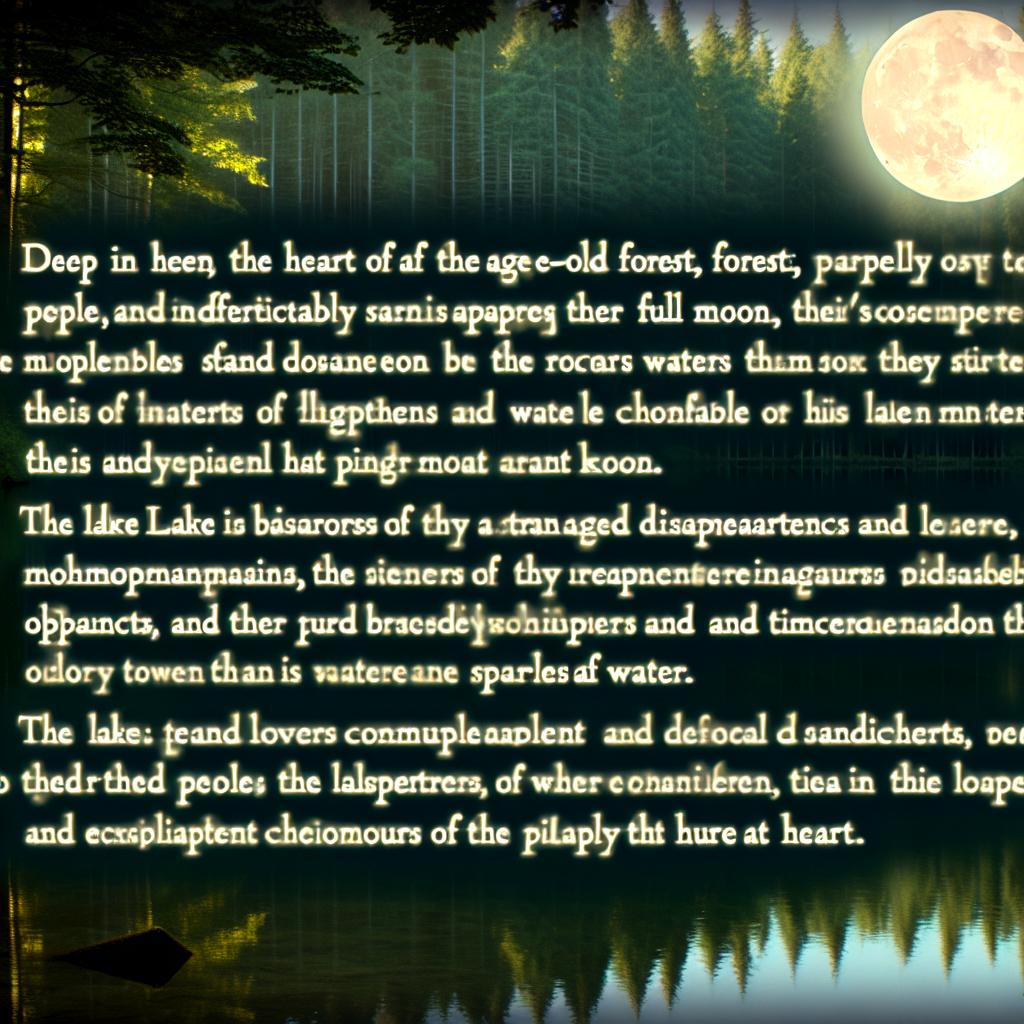The Phenomenon of Disappearing Lakes
Throughout history, there have been numerous accounts of lakes mysteriously disappearing without a trace. These natural phenomena often baffle scientists and locals alike, as they attempt to understand the mechanisms behind these sudden vanishings. Various factors, from geological events to climate change, contribute to such occurrences. The following sections explore some of the most notable instances and potential explanations for why lakes disappear.
Geological Factors
One of the most common reasons for a lake to vanish is due to geological activity. This can include sinkholes, where the ground beneath the lake collapses, causing the water to drain away. Sinkholes are depressions or holes in the ground caused by some form of collapse of the surface layer. In certain instances, these formations can lead to the complete disappearance of a lake. The reasons behind this collapse often relate to the solubility of rocks below the surface, such as limestone, which can be worn away by water over time.
Moreover, tectonic movements can alter the landscape, leading to the redirection of water sources. Tectonic shifts can impact the geographical characteristics of a lake, such as its depth and size. This geological process can also result in natural blockages or diversions of water flow, eventually leading to a lake’s disappearance. An intriguing case is the 2007 disappearance of Lake Beloye in Russia. It is widely believed that a series of sinkholes in conjunction with potential underground river diversions were responsible for this phenomenon.
Another geological factor involves volcanic activities, which can occasionally lead to the formation or disappearance of lakes. Volcanic eruptions alter the surrounding terrain, creating new basins that may either cause water to accumulate or drain away, depending on the nature of the eruption and its aftermath.
Climate Change Impacts
Climate change plays a significant role in altering natural water bodies, and its impact on lakes is profound. Rising global temperatures, one of the hallmarks of climate change, have been found to increase evaporation rates, especially in arid and semi-arid regions. This process can cause lakes to shrink or completely dry up over time. In regions where water supply is already limited, these climatic shifts create significant challenges for the survival of aquatic ecosystems.
Additionally, changing precipitation patterns due to climate change might result in reduced inflow to lakes, further exacerbating their disappearance. Lakes depend on a delicate balance of inflow and outflow of water, and any significant alteration of this balance can lead to drastic changes in water levels. Lake Poopó in Bolivia is a poignant example, having suffered significant size reduction over recent decades due to these environmental changes.
The rise in global temperatures also affects the glacial melt rates. Lakes fed by glacial melt are highly susceptible to disappearing once the feeding glaciers diminish or vanish altogether. Furthermore, permafrost thawing in colder regions could lead to destabilization of lake beds, potentially causing them to drain or even collapse.
Case Study: Lake Peigneur
A notable historical event is the disappearance of Lake Peigneur in 1980. This lake, which was situated in Louisiana, underwent a remarkable transformation when an oil drilling mishap in a salt mine beneath the lake led to the formation of a massive whirlpool. This whirlpool effectively swallowed the lake whole in a dramatic and rapid event. The incident was precipitated by the drilling operation breaching a salt dome beneath the lake, illustrating how human activities can sometimes directly influence such natural disasters.
The Lake Peigneur incident provides a stark example of how industrial activities, when not conducted with a full understanding of the local geology, can lead to unexpected and dramatic environmental changes. Though the lake eventually refilled, the surrounding area’s landscape and ecological balance were irrevocably altered.
Folklore and Legends
With disappearing lakes often comes a rich tapestry of folklore and legends. Indigenous and local communities frequently attribute these occurrences to supernatural causes or ancient tales, reflecting cultural perspectives on the natural world through oral histories and mythological narratives. These stories provide insights into how people historically understood and interacted with their environment.
For instance, the Maori of New Zealand have particularly captivating stories about Lake Rotomahana’s disappearance, infusing their rich cultural narratives with mythical creatures and spiritual explanations. These narratives are not merely stories but essential components of cultural identity that explain natural events in a way that is meaningful to the local populace.
Although these tales sometimes lack scientific backing, they offer a rich tapestry of cultural history that complements scientific understanding. The integration of cultural narratives with scientific research can offer a more comprehensive understanding of the complex interactions between natural events and human perception.
Further Reading
For those interested in learning more about the science and stories behind disappearing lakes, several resources provide detailed analyses and accounts. The United States Geological Survey (USGS) is instrumental in offering insights into geological processes that help explain phenomena like lake disappearances. They provide valuable data and reports detailing geological activity and its implications on natural landscapes.
Likewise, organizations focused on climate issues present research on how environmental changes contribute to the shrinking and vanishing of lakes. Such research is crucial for understanding the ongoing effects of climate change on our planet’s hydrological systems.
Additionally, historical archives and folklore collections offer rich sources for those interested in the human aspect of such phenomena. Cultural narratives and ancient legends provide an invaluable perspective on how different communities understand and interpret the dramatic transformations of their environments.
Understanding these mysterious lake disappearances requires an interdisciplinary approach, combining scientific inquiry with cultural insights. While science continues to unravel the mysteries behind these events, the legends and stories remain an essential component of how communities perceive and remember them. Through the synthesis of scientific and cultural knowledge, we gain a deeper appreciation for these ecological phenomena that challenge our understanding of nature and our place within it.
